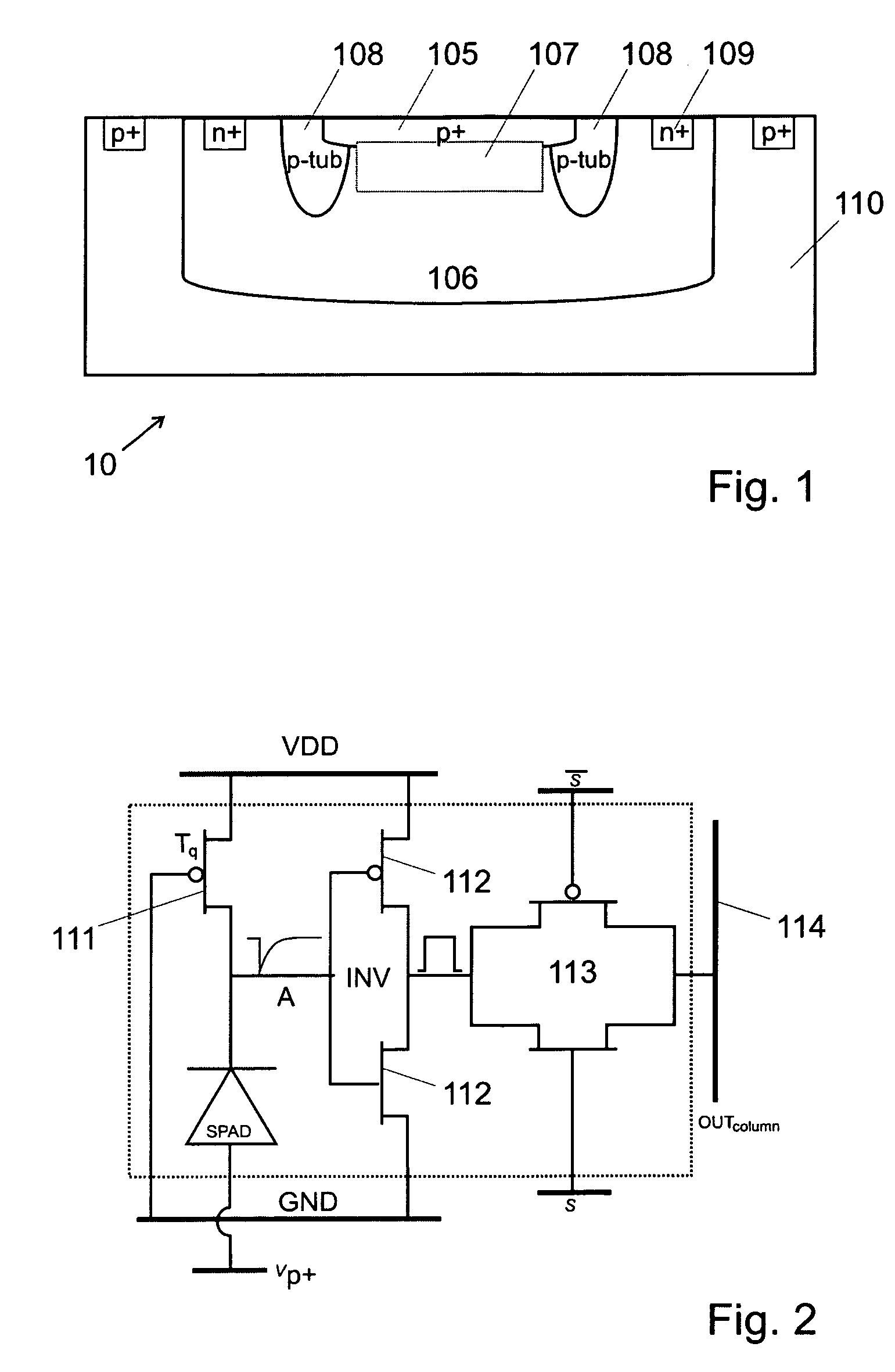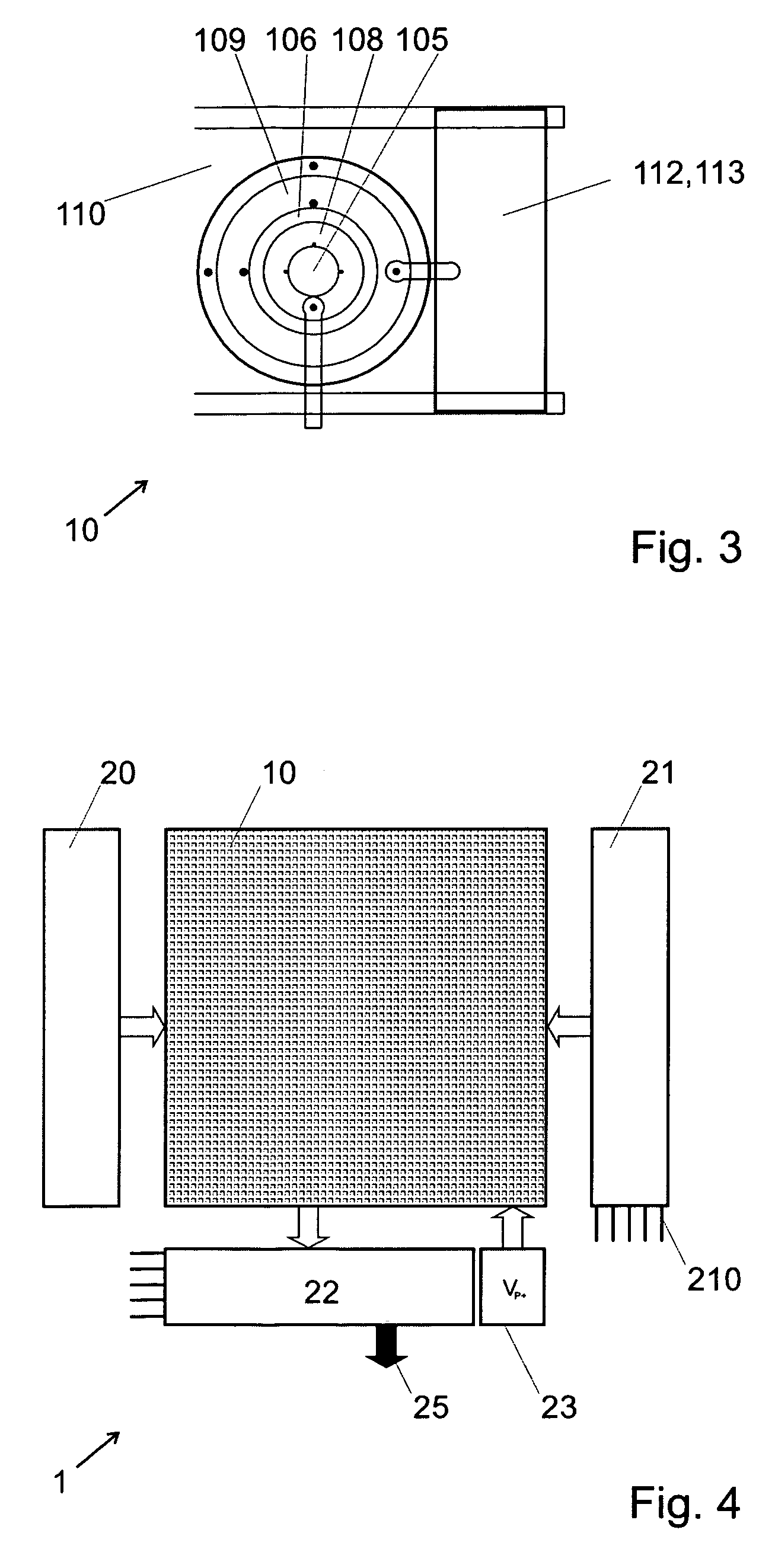Integrated imager circuit comprising a monolithic array of single photon avalanche diodes
a monolithic array and imager technology, applied in the field of integrated imager circuits, can solve the problems of power dissipation, speed requirement on the sensor, and power dissipation, and achieve the effects of tight speed and accuracy specifications, low power dissipation, and high sensitivity
- Summary
- Abstract
- Description
- Claims
- Application Information
AI Technical Summary
Benefits of technology
Problems solved by technology
Method used
Image
Examples
Embodiment Construction
[0040]FIGS. 1 and 3 illustrate a CMOS implemented SPAD according to the invention. A SPAD is a p-n junction biased above breakdown voltage Vbd by an excess voltage Ve of a few volts. Operated in the so-called Geiger mode, avalanche photodiodes can react on single photons. A primary carrier resulting from the absorption of a photon may generate a nearly-infinite number of secondary electron-hole pairs by impact ionization.
[0041]The SPAD illustrated in FIG. 1 comprises a p / n junction 107 between a p+ region 105 (anode) and a deep n tub (n well) 106. A second junction exists between the deep n tub and the p substrate 110. The depth of those junctions and the doping profile of the different regions may be adapted to the wavelength one wants to detect.
[0042]The upper p+ / deep n-tub junction 107 provides the multiplication region where the Geiger breakdown (the avalanche) occurs, regularly triggered by photons, possibly by simple photons
[0043]For a SPAD to operate in avalanche mode, the up...
PUM
 Login to View More
Login to View More Abstract
Description
Claims
Application Information
 Login to View More
Login to View More - R&D
- Intellectual Property
- Life Sciences
- Materials
- Tech Scout
- Unparalleled Data Quality
- Higher Quality Content
- 60% Fewer Hallucinations
Browse by: Latest US Patents, China's latest patents, Technical Efficacy Thesaurus, Application Domain, Technology Topic, Popular Technical Reports.
© 2025 PatSnap. All rights reserved.Legal|Privacy policy|Modern Slavery Act Transparency Statement|Sitemap|About US| Contact US: help@patsnap.com



